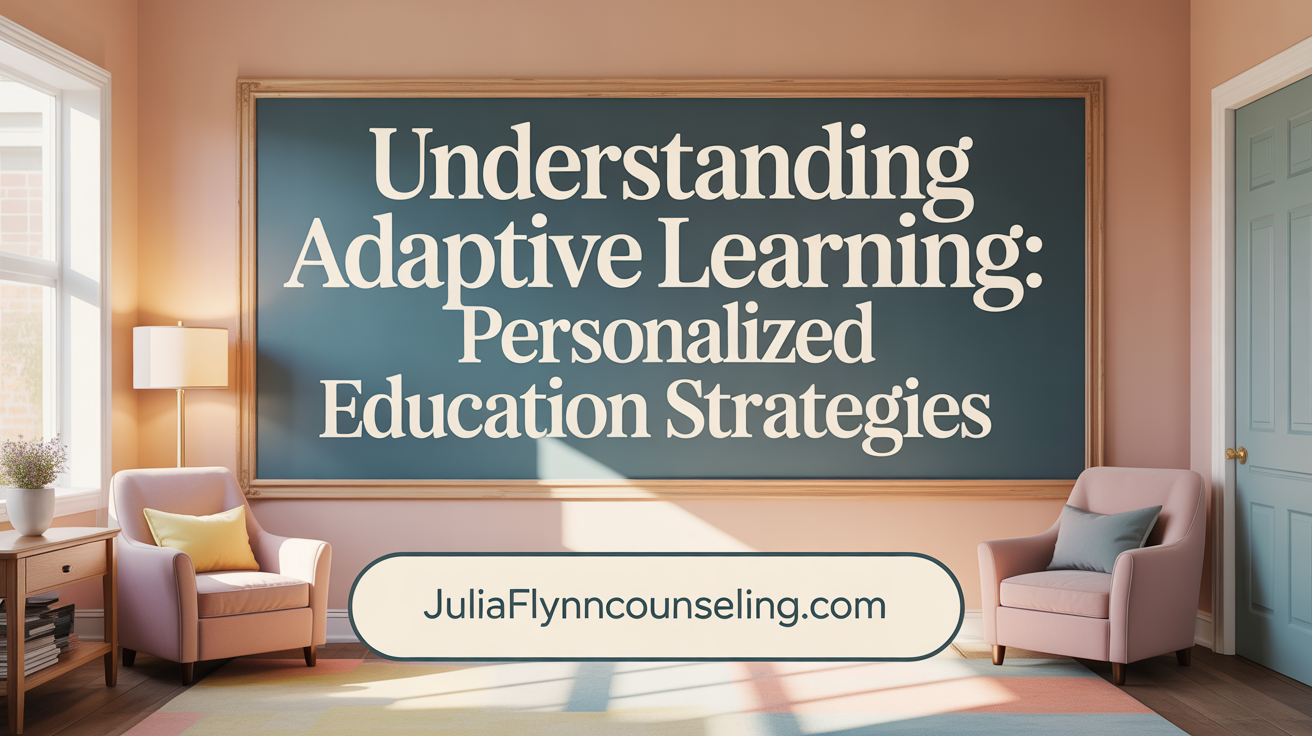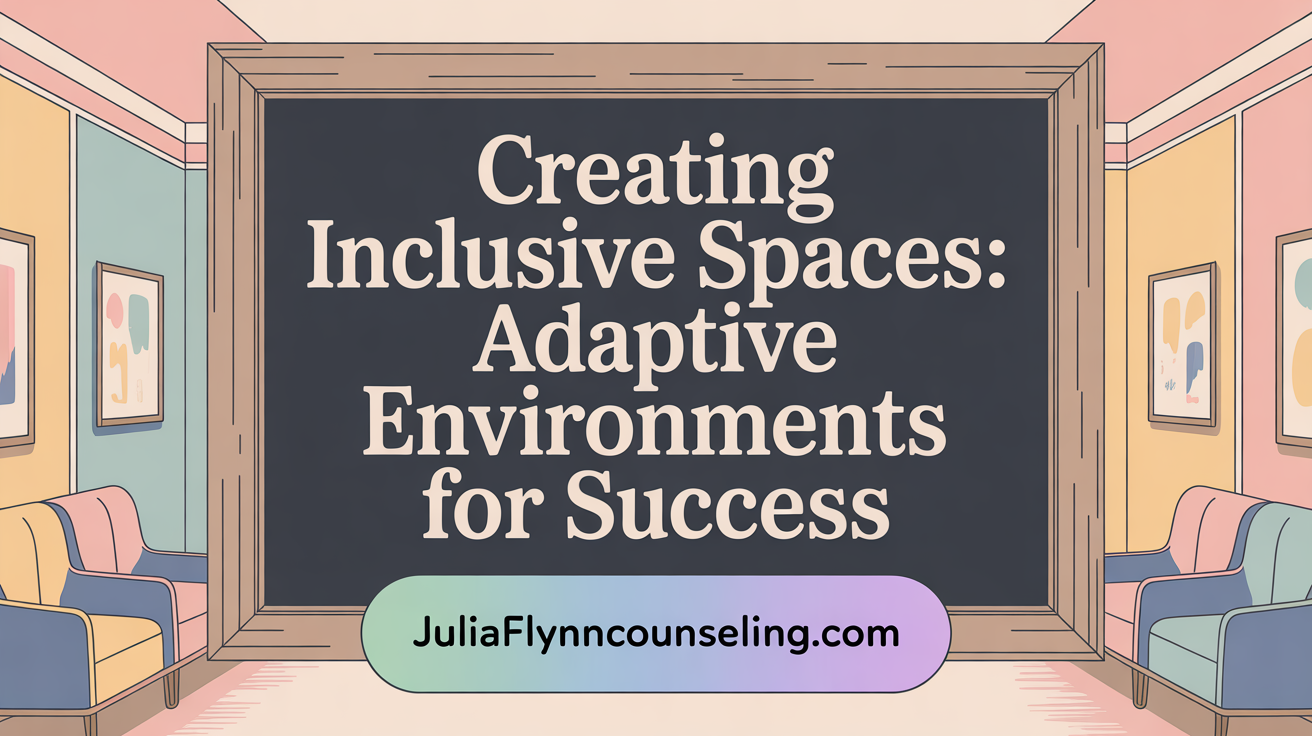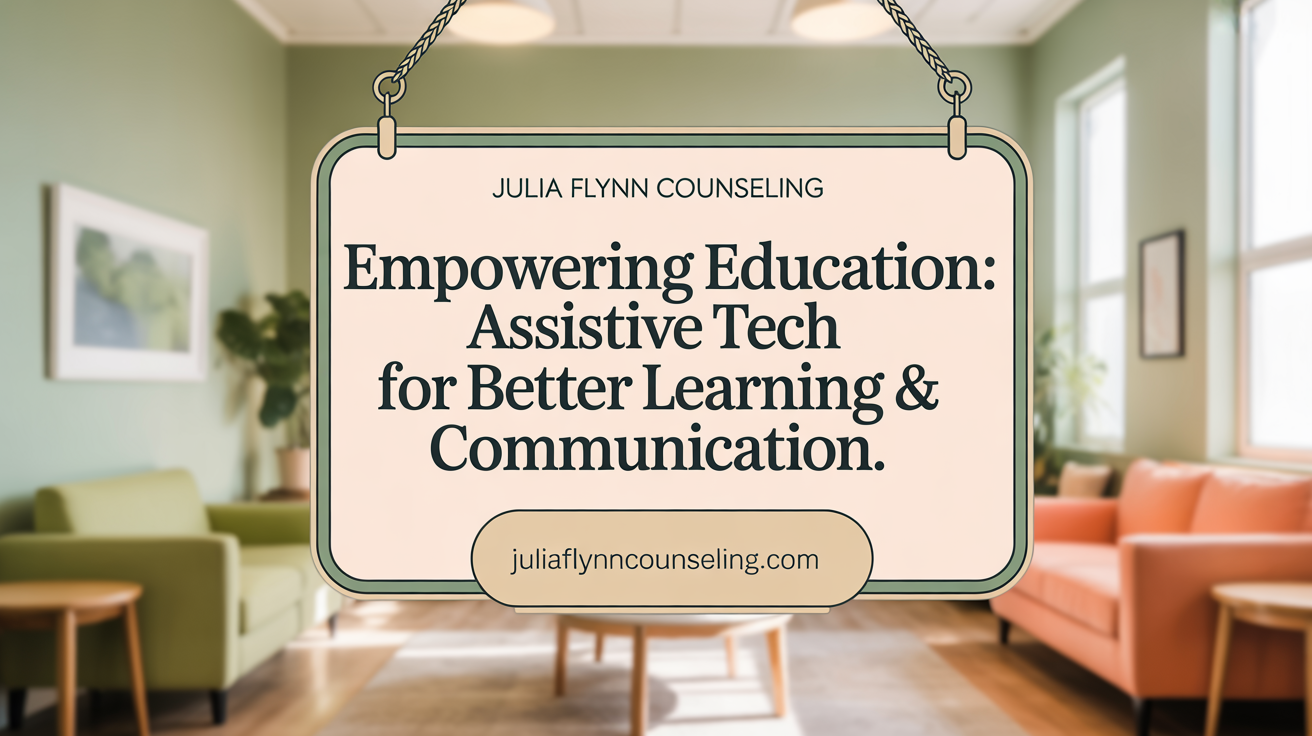Understanding Adaptive Learning and Its Importance
Adaptive learning transforms education by personalizing experiences to meet the unique developmental and educational needs of children with special needs. This approach employs tailored activities, assistive technologies, and emerging AI innovations to foster learning, communication, social inclusion, and independence. Our article explores these adaptive methods and how they support children with disabilities across educational and faith-based settings.
Fundamentals of Adaptive Learning for Children with Special Needs

What is an example of adaptive learning?
An example of adaptive learning is Duolingo, a popular language learning app. It personalizes exercises based on each user’s performance, adjusting difficulty level as they progress. If a learner struggles with certain topics, the system provides additional practice and support to reinforce understanding.
Similarly, online tutoring platforms employ real-time data to modify lesson plans, question difficulty, and learning activities. This ensures that the content remains challenging yet achievable, catering to individual needs.
Adaptive learning environments rely heavily on algorithms and data analysis to craft personalized educational experiences. These systems monitor how learners respond and adapt content dynamically, helping each child learn at their own pace.
Applications in special education contexts
In special education, adaptive learning tools are transforming how children with disabilities engage with the curriculum. AI-driven platforms can identify specific learning challenges, such as dyslexia or dyscalculia, and tailor exercises that target these difficulties.
For example, students with dyslexia might use text-to-speech applications that adjust reading speed and highlight words to enhance comprehension. Children with limited motor skills can benefit from eye-tracking technology that helps them complete tasks independently.
Web-based adaptive systems can also provide instant feedback, support social skills development, and foster independence. These tools help teachers and parents create inclusive learning environments that respect each child’s abilities and needs.
By leveraging data and algorithms, adaptive learning systems ensure that children with special needs receive personalized support, leading to improved engagement, confidence, and academic success.
| Application Area | Example Tools | Impact on Learning |
|---|---|---|
| Language Skills | TTS apps, audiobooks | Improve reading and comprehension |
| Motor Skills | Eye-tracking, predictive text | Promote independence |
| Cognitive Skills | Custom quizzes, visual aids | Enhance problem-solving |
| Social Skills | Virtual social interactions | Encourage social participation |
Incorporating adaptive learning into education not only makes learning more accessible but also empowers children with disabilities to reach their full potential.
Designing Adapted Learning Environments to Support Special Needs

How can a learning environment be adapted for children with special needs?
A well-designed learning space plays a vital role in supporting children with diverse disabilities. Physical and sensory modifications are essential to foster accessibility and comfort. For instance, adjusting lighting levels and minimizing visual clutter can help children with sensory sensitivities. Offering flexible seating options, such as cushions, wobble stools, or standing desks, caters to physical needs and helps maintain focus. Furniture should be easily movable and adaptable, with structures like lowered chairs or secure desks, aiding children with orthopedic challenges.
Environmental modifications extend to auditory comfort—incorporating soft sounds or white noise can reduce distractions. Visual aids, cue cards, and sensory-friendly materials support comprehension and independence. Reward systems like visual charts encourage positive behavior and participation.
Creating a safe, inclusive, and adaptable environment ensures that each child's unique needs are met. This approach promotes active engagement, participation, and success, fostering an atmosphere where children feel comfortable and motivated to learn.
What adaptations can be made to support children with special needs?
Support strategies must be tailored to individual children, respecting their abilities, interests, and backgrounds. Physical adaptations might include rearranging furniture for easy access or installing ramps and grab bars for mobility support.
Use of visual and tactile cues significantly boosts understanding and routine adherence. Picture schedules help children anticipate activities, reducing anxiety. Tactile toys and textured materials can enrich sensory experiences and foster fine motor skills.
Assistive technology also plays a crucial role. Devices like communication boards, tablets with specialized apps, or switch systems enable independent participation. Adjustments in instruction—such as simplifying language or breaking tasks into manageable steps—are equally important.
Collaboration among families, therapists, and educators ensures that support plans are consistent across environments. Regular assessment allows for modifications based on progress or changing needs. Flexibility in implementation keeps these adaptations effective, encouraging a sense of achievement and belonging for children with special needs.
Additional information
Similar strategies are often supported by ongoing research and practice guidelines, emphasizing the importance of environment and activity customization. Integrating sensory-friendly activities, visual cues, and assistive tech not only facilitates learning but also enhances overall well-being. Creating adaptive, safe, and welcoming settings ultimately fosters equitable opportunities for children to thrive academically and socially.
Adaptive Play and Activities that Foster Development and Inclusion

What role does adaptive play and activities have in promoting development and inclusion for children with disabilities?
Adaptive play and activities play a vital role in supporting children with disabilities by creating opportunities for full and meaningful participation. These activities are carefully modified or designed to suit diverse physical, sensory, and cognitive needs, allowing every child to engage alongside their peers.
Sensory-friendly and tactile activities, such as sensory bins and textured toys, help children explore textures, sounds, and visuals in controlled environments. This exploration enhances sensory processing skills while providing comfort and stimulation.
Adaptive movement activities—including wheelchair yoga and dance—boost flexibility, strength, and coordination. They also promote confidence and improve overall physical health.
Modified classic games, like bingo with tactile cues or adapted card and dice games, provide inclusive fun that fosters social interaction and cognitive development. Using visual and tactile cues makes these games accessible to children with different abilities.
Supporting the social and emotional growth of children with disabilities also involves engaging caregivers and families in designing and implementing these activities. When activities are tailored to individual needs and preferences, they foster a sense of belonging, independence, and community.
Creating inclusive environments with a variety of adaptive activities encourages children to develop essential skills while fostering respect, understanding, and empathy among all participants. Ultimately, these efforts contribute to the growth of confident, socially connected, and skilled individuals.
Examples of adaptive play activities for children with disabilities
| Activity | Description | Benefits |
|---|---|---|
| Sensory bins | Fill with textured materials, objects, or visual stimuli | Enhances sensory integration |
| Wheelchair yoga | Gentle stretches and poses adapted for wheelchairs | Improves flexibility and confidence |
| Tactile storytelling | Using tactile books and visual aids during stories | Develops language and cognitive skills |
| Tactile bingo | Bingo with textured cards and cues | Fosters social and motor skills |
| Bubble or balloon play | Blowing bubbles or playing with balloons | Stimulates visual tracking and motor control |
These inclusive activities exemplify how adaptability in play promotes development and a joyful sense of community among children with diverse needs.
Development and Assessment of Adaptive Skills in Special Education

What are adaptive skills in special education?
Adaptive skills in special education are fundamental abilities that enable individuals to navigate daily life independently and participate fully in their communities. These skills encompass a wide range of activities such as communication, social interaction, self-care routines, and functional academics. They are often divided into different domains, including social adaptive skills like understanding social cues and forming relationships, and practical adaptive skills like personal hygiene, safety awareness, and household chores.
Assessing these skills is crucial for identifying areas of strength and difficulty. Tools like the Vineland Adaptive Behavior Scales (Vineland) and the Adaptive Behavior Assessment System, Third Edition (ABAS-3), are commonly used to measure adaptive functioning. These assessments help educators and caregivers tailor interventions, focusing on skill development that promotes greater independence.
Overall, developing adaptive skills is vital for children with disabilities, especially those with autism. These skills facilitate more harmonious community integration, improve self-confidence, and reduce dependence on caregivers, leading to improved quality of life.
What are some examples of adaptive skills for students, including those with autism?
Adaptive skills vary widely and are tailored to meet individual needs. For students, especially those with autism, these skills include:
- Social Skills: Understanding social cues, initiating conversations, maintaining relationships, and cooperating with peers.
- Practical Skills: Personal hygiene (dressing, grooming, bathing), safety awareness, and household chores.
- Conceptual Skills: Reading, writing, time management, understanding numbers, and problem-solving.
Developing these skills often requires structured teaching approaches. For children with autism, strategies such as visual schedules, behavioral interventions, and specialized teaching routines assist in mastering these abilities. Promoting adaptive skills enables them to navigate various situations confidently, engage with peers, and achieve greater independence.
| Domain | Examples | Supporting Strategies |
|---|---|---|
| Social Skills | Making eye contact, initiating greetings | Visual cues, social stories, role-playing |
| Practical Skills | Personal hygiene, safety checks | Step-by-step guides, visual timers |
| Conceptual Skills | Basic reading and math, understanding time | Structured lessons, multisensory methods |
Through consistent teaching and assessment, children with autism can develop these adaptive skills, ultimately contributing meaningfully to their personal growth and community involvement.
Assistive Technology Enhancing Learning and Communication

How can assistive technology be utilized to enhance learning and communication for children with disabilities?
Assistive technology plays a crucial role in empowering children with disabilities to learn and communicate more effectively. It involves a variety of devices and software designed to address individual needs, making educational content more accessible.
Tools such as text-to-speech programs allow children to listen to written material, aiding those with reading difficulties like dyslexia. Speech-to-text applications enable students with speech challenges to articulate their thoughts more easily, supporting expressive communication. Electronic organizers and visual scheduling tools help children manage their tasks and routines, fostering independence.
Customized assistive devices, like communication boards or electronic speech devices, help students express themselves and interact more confidently with teachers and peers. These tools also promote active participation in classroom activities, helping children engage and learn alongside others.
Implementation of assistive technology is a collaborative process. Educators, families, and specialists assess each child's specific needs through evaluations and develop tailored solutions. These are often embedded within Individual Education Plans (IEPs) to ensure consistent, goal-oriented support.
Overall, assistive technology enhances not only academic skills but also social inclusion and self-reliance. By providing tailored support, AT helps children with disabilities reach their full potential and participate fully in educational experiences.
Applying AI and Emerging Technologies in Adaptive Learning
How can AI and emerging technologies be applied in adaptive learning, communication support, and engagement for children with special needs?
AI and new technological tools are transforming how children with special needs learn, communicate, and interact. These innovations enable more personalized and accessible educational experiences tailored to each child's unique abilities and learning styles.
One prominent application is AI-driven speech recognition and text-to-speech tools. Devices such as Voiceitt understand speech patterns of children with speech impairments, allowing them to participate more fully in discussions and classroom activities. Text-to-speech programs like Microsoft’s Immersive Reader help students by adjusting reading speeds, highlighting words, and simplifying vocabulary, thus supporting comprehension.
Virtual reality and multisensory environments create immersive learning experiences that enhance engagement. These tools, including 3D models and virtual simulations, cater to visual, auditory, and kinesthetic learners, making complex concepts more approachable.
Assistive robotics and social AI companions offer additional support, encouraging social interaction and independence. Adaptive content generation powered by AI can adjust lessons based on real-time assessment of student progress, ensuring that each child receives instruction at their optimal learning pace.
AI also helps monitor student progress continuously. Using predictive analytics, educators can identify skill gaps and modify teaching strategies on the fly, promoting better learning outcomes.
Despite these promising developments, implementing AI and emerging technologies responsibly is crucial. Challenges such as algorithmic bias, data security, and ensuring equitable access must be addressed to maximize the benefits of these tools for all children. When thoughtfully integrated, AI and advanced technologies open new pathways toward inclusive and effective education for children with diverse needs.
Inclusive Education and Faith-Based Adaptive Learning Practices
What are effective inclusive education practices and strategies for accommodating children with autism and other disabilities?
Effective inclusive education involves a combination of visual supports like picture cards and visual schedules to help clarify daily routines and expectations. Simplifying language and using concrete terms make instructions easier to understand, while positive reinforcement encourages desired behaviors and participation. Sensory-friendly spaces are essential; these could include noise-canceling headphones, fidget toys, or quiet corners to help children manage sensory overload. Structured routines and advanced notice before transitions reduce anxiety and help children prepare mentally for changes. Fostering positive relationships among peers through group activities, buddy systems, and social modeling promotes understanding and acceptance. Collaboration with specialists, families, and continuous teacher training—such as programs from Incredible Years—ensures that individual needs are met consistently. Creating an inclusive environment emphasizes respect for differences, equitable participation in classroom activities, and development of social skills, ultimately fostering a strong sense of belonging and mutual respect among all students.
How can adaptive learning solutions be integrated within various educational and faith-based contexts to promote accessibility and inclusion?
Adaptive learning tools can be seamlessly incorporated into both general and faith-based settings by aligning their features with principles of compassion, respect, and inclusivity rooted in religious and educational values. These platforms can be tailored to reflect faith-based themes, reinforcing moral teachings and spiritual growth alongside academic development. In religious communities and faith-based schools, technology can support interfaith understanding by providing personalized content that respects diverse beliefs while emphasizing shared values. For example, multimedia resources can include religious stories, moral lessons, and language adapted to various learners’ needs. Educators and faith leaders can undergo professional development to utilize these tools effectively, ensuring they enhance the educational experience without compromising religious integrity. Regular evaluation and feedback from students and families help refine the approach. By making learning more accessible and personalized, adaptive solutions foster an inclusive environment where spiritual and academic growth go hand in hand, encouraging respect, empathy, and understanding across diverse communities.
| Strategy | Description | Implementation Examples |
|---|---|---|
| Visual Supports | Clarify routines and expectations through pictures and visual cues | Visual schedules, picture cards, icons |
| Sensory-Friendly Spaces | Manage sensory overload in safe areas | Quiet rooms, noise-canceling headphones, tactile toys |
| Peer Support and Social Skills | Promote positive peer interactions | Buddy systems, group activities, social modeling |
| Faith-Inclusive Curriculum | Integrate religious themes with adaptive tools | Multimedia religious stories, faith-based moral lessons |
| Professional Development | Ongoing teacher and caregiver training | Workshops on inclusive strategies, tech training |
This approach underscores the importance of tailoring educational and faith-based practices to meet diverse learners’ needs, promoting a truly inclusive community.
Peer Influence and Evidence-Based Adaptive Learning Media for Special Needs
How does peer influence affect the development of adaptive skills in children with disabilities?
Classroom interactions can significantly impact children with intellectual disabilities, particularly in developing conceptual skills such as communication, self-direction, and functional academics. Research indicates that higher classroom-level conceptual skills can positively influence individual growth in these areas. When peers display strong adaptive behaviors, children with disabilities are more likely to imitate and internalize these skills, leading to greater progress over time.
Interestingly, while social and practical skills do not seem as influenced by peer concepts in studies, the social environment still plays a vital role in creating an inclusive and motivating setting.
What role does research play in developing effective adaptive learning tools?
Extensive research has supported the creation of adaptive, web-assisted learning systems tailored for students with specific learning disabilities like dyslexia, dyscalculia, and dysgraphia. These systems aim to provide personalized content, real-time feedback, and independent access that traditional classroom settings often lack.
Studies reveal that current applications are limited, and many schools and parents lack adequate information about suitable tools. However, the implementation of adaptive media—such as visual aids and sensory tools—has shown promising results in increasing motivation, understanding, and independence among children with special needs.
How do web-assisted and AI-driven platforms benefit children with disabilities?
AI-driven educational platforms use machine learning, natural language processing, and interactive data to customize learning experiences. These systems guide students through lessons, accommodate individual learning styles, and adjust difficulty levels dynamically.
Research data demonstrates that students utilizing AI-supported platforms achieve significantly higher improvements in academic performance, especially in areas like reading, math, and language. For example, AI models have accurately predicted student achievements with over 90% accuracy, translating into more targeted interventions.
Why is motivation and independent study support vital?
Supporting motivation and independence is crucial for meaningful learning. Adaptive tools empower children to explore content confidently and at their own pace, fostering self-reliance. Resources such as interactive games, personalized feedback, and sensory-friendly materials enhance engagement. Consequently, children develop not only academic skills but also confidence and autonomy, encouraging lifelong learning and social participation.
| Aspect | Key Features | Impact on Special Needs Education |
|---|---|---|
| Classroom Peer Effects | Influence of classmates' skills on individual progress | Promotes conceptual skill development |
| Adaptive Learning Media | Visual, tactile, and web-based tools | Enhances motivation, understanding |
| AI-Powered Systems | Machine learning, real-time feedback | Improves performance, personalization |
| Motivation & Independence | Interactive, sensory, personalized tools | Builds confidence, promotes autonomy |
The Future of Adaptive Learning for Children with Special Needs
Adaptive learning represents a powerful tool to unlock the potential of children with special needs by providing personalized, inclusive, and supportive educational environments. Through tailored activities, assistive technologies, and advancing AI applications, children gain opportunities to develop essential adaptive skills, communicate effectively, and participate fully in academic and social life. Collaborative efforts among educators, families, technologists, and faith communities enhance the accessibility and relevance of these approaches. Continued research and responsible integration of emerging technologies will further advance inclusive education, empowering every child to thrive and succeed in a world that embraces diversity.
References
- Fun and Adaptive Activities for Children with Special Needs
- AI in the Classroom: Creating New Opportunities for Students with ...
- Help for Students with Special Needs | Acellus Academy
- Adaptive Learning for Kids with Special Needs - St. Margaret Mary
- Adaptive Physical Education for Children with Disabilities
- Assistive Technology for Kids with Learning Disabilities: An Overview
- A New Era of Special Education Begins with Inclusive AI
